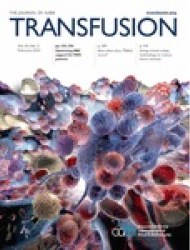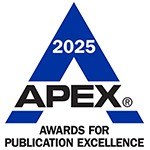.jpg?sfvrsn=2aad2fbd_1)
More than 400,000 units of blood are transfused to pediatric patients each year. As a pediatric transfusion medicine specialist at Children's National Hospital in Washington, D.C., I’ve witnessed firsthand the critical role that precise transfusion care plays in the lives of our youngest and most vulnerable patients – as well as the hope it brings to their families.
Pediatric patients have unique physiological and medical needs that require tailored, specialized approaches. This is particularly true when caring for children with sickle cell disease (SCD). For many of these children, blood transfusion is not a one-time treatment but a lifelong therapy necessary for treating complications and preventing severe outcomes. While navigating the health care system and complex treatment plans, these patients and their families depend on access to a reliable, safe blood supply and medical teams who understand their unique challenges.
Every child deserves quality transfusion care and access to life-saving interventions, regardless of their geographical location. From advancements in transfusion protocols to emerging gene therapy treatments for children with SCD, our field continues to evolve and make meaningful strides. This vital work inspires me, and I am proud of the progress we are making to advance transfusion care for all children.
This month’s issue of AABB News highlights two important areas within our community: pediatric transfusion care and the evolving landscape of SCD treatment. In the first feature, my colleagues at Children’s National Hospital explore gene therapy as a curative option for children with SCD. The second article spotlights Marjorie DeJoie-Brewer, MD, a rare disease expert, who offers a unique perspective as both a physician and sickle cell warrior. In addition, this issue features a “White Coats” interview with Nabiha H. Saifee MD, PhD, who discusses transfusion support for pediatric patients in intensive care settings.
Lastly, don’t miss next month’s Annual Meeting, where professionals from across the blood and biotherapies field will come together in San Diego to share innovations, exchange new ideas and strengthen our community dedicated to improving transfusion outcomes for all patients. I look forward to seeing you there!
.jpg?sfvrsn=ba2dc62c_1)
Meghan Delaney, DO, MPH
AABB President


Transfusion is AABB’s scholarly, peer-reviewed monthly journal, publishing the latest on technological advances, clinical research and controversial issues related to transfusion medicine, blood banking, biotherapies and tissue transplantation. Access of Transfusion is free to all AABB members.
Learn More About Transfusion Journal
Keep abreast of what's happening in the field of biotherapies with CellSource - AABB's monthly update on the latest biotherapies news.
To submit news about the blood and biotherapies field to AABB, please email news@aabb.org.
President
Meghan Delaney, DO, MPH
Chief Executive Officer
Debra Ben Avram, FASAE, CAE
Chief Communications and Engagement Officer
Julia Zimmerman
Director of Marketing and Communications
Jay Lewis, MPH
Managing Editor
Kendra Y. Mims, MFA
Senior Communications Manager
Drew Case
AABB News
(ISSN 1523939X) is published monthly, except for the combined November/December issue for the members of AABB; 4550 Montgomery Avenue; Suite 700 North Tower; Bethesda, MD 20814.
AABB is an international, not-for-profit association representing individuals and institutions involved in transfusion medicine, cellular therapies and patient blood management. The association is committed to improving health by developing and delivering standards, accreditation and educational programs that focus on optimizing patient and donor care and safety.
+1.301.907.6977
Email: news@aabb.org
Website: www.aabb.org
Copyright 2025 by AABB.
Views and opinions expressed in AABB News are not necessarily endorsed by AABB unless expressly stated.
Notice to Copiers: Reproduction in whole or part is strictly prohibited unless written permission has been granted by the publisher. AABB members need not obtain prior permission if proper credit is given.
